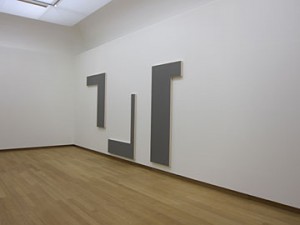Looking back in time, trying to remember how I’ve learned to write and read, no memories appears. At least no memories that create a clear image of the learning process.
In elementary school we learned the letters. We learned how they look like, how they sound, how to write them and connect them into words. This process took quite long time I think and it’s difficult to be described in retrospect. In these classes, we all had to study on writing the same letters, but we all created different handwriting. Some could do it beautifully, some ugly to unreadable. How a handwriting can be unreadable?
Now, reading a ‘small’ book from a ‘big’ man – Gerrit Noordzij, helps me to realize why and how I can do this today. A book written even before I was born answers the question as simple as ‘the space’ and with writing especially the ‘white space’.
In our current time we see hundreds of images every day. Some we remember for a reason, some we forget immediately. How does our human brain read those images? What helps it in this process?
The “boom” of a new ways to process images started in the second half of the 19th century, when people started creating more spaces for museums and galleries. Later on with the use of architectural deconstructions, making them fairly big and “clean”, with the only purpose to contain some of those special images for us.
The use of space is very common in modern art. In some cases we actually perceive the space as a piece of the art. For example, if a work of art is placed in surrounding A, which is empty, it will be processed in your mind differently than in surrounding B, which is full with other objects.
In modern art we refer to surrounding A as the ‘White cube’, with its square or oblong shape, white walls and a light usually coming from the ceiling. A book from Brian O’Doherty (Inside the white cube – 1976), in which he confronted the modernist obsession with the white cube arguing that every object became almost sacred inside it, making the reading of art problematic.
As surrounding B was more standard in the few centuries before that. Then the exhibition space was the salon, a dark space so filled with works that it was difficult to see the beautiful, detailed paintings.
The importance of space can be found in different forms. Also in writing it plays a crucial roll in getting the message across, in other words: reading. In his book ‘ The stroke of the pen’ Gerrit Noordzij emphasise how the space in and around letters can make or brake the word and therefore the text.This space has to be put in rhythm. He writes: “The rhythmic connection of the white shapes in the word is the condition of the rhythm of the black shapes and vice versa.”
So this rhythm can be seen only in combination of letters. If a letter and subsequently a word doesn’t have its own space in and around it, then the white cube that belongs to the letter is impaired. As a result the word becomes just like an image hanging in saloon from 18 century.
Trying to understand this theory is like learning to read and write all over again. That opens a new perception on all written letters and words, how are they made and how they come across. Always look around and you’ll might see things in a new way…


